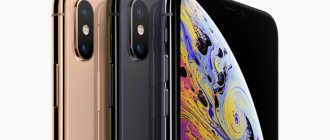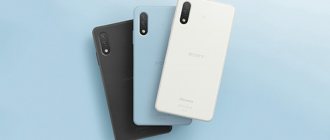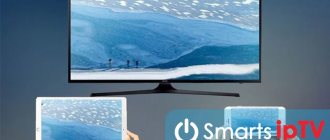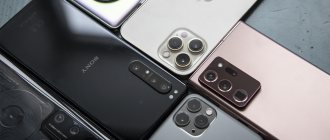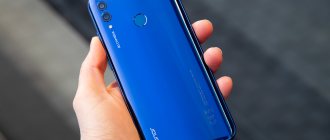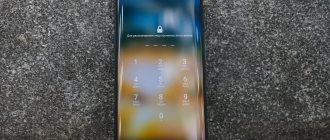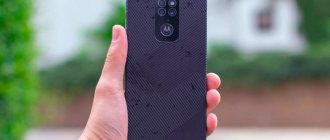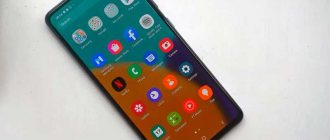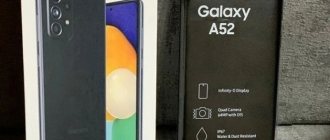Sales of Sony smartphones fell in 2022, but the company continues to release new models. Sony Xperia 1 III has become yet another flagship of the brand that causes confusion, but it is definitely worthy of attention.
Since the Xperia Z5 Premium in 2015, all Sony flagships have had 4K displays. The Xperia 1 III added a high refresh rate to this, making it the first Sony smartphone ever to feature a 4K/120Hz screen. Another major update is the varifocal periscope camera. You can switch between any value between 2.9x and 4.4x (70mm or 105mm).
The smartphone runs on the Snapdragon 888 processor, while the Xperia 1 III has more RAM than laptops (12 GB). There is water protection, fast charging and a 4500 mAh battery. What else? Find out from the review.
Specifications Sony Xperia 1 III
| Models | XQBC62/V, XQBC52V.UKCX, SO-51B, SOG03, A101SO, XQ-BC62, XQ-BC72, XQ-BC52, XQ-BC01, XQ-BC11, XQ-BC21 |
| Screen | 6.50 inch OLED, 1 billion colors, resolution 3840×1644 pixels, 643 ppi, aspect ratio 21.02:9, 120 Hz, HDR BT.2020, 4K at 60 Hz/FHD at 120 Hz |
| CPU | Qualcomm Snapdragon 888 5G (5nm): Octa-core (1x2.84GHz Kryo 680 + 3x2.42GHz Kryo 680 + 4x1.80GHz Kryo 680) |
| Graphic arts | Adreno 660 |
| RAM | 12 GB |
| Inner memory | 256/512 GB, expandable via common SIM card slot |
| System and software | Android 11 |
| Main cameras | 12 MP, wide angle, f/1.7, 24 mm, 1/1.7 inch, 1.8 µm, Dual Pixel PDAF, OIS + 12 MP, ultra wide angle, f/2.2, 124˚, 16 mm , 1/2.6″, Dual Pixel PDAF + 12 MP, telephoto lens, f/2.3, 70 mm, f/2.8, 105 mm, 1/2.9 inch, Dual Pixel PDAF, 3x/4 ,4x optical zoom, OIS + 0.3-MP, depth sensor, TOF 3D |
| Front camera | 8-MP, f/2.0, 24 mm (wide), 1/4 inch, 1.12 µm |
| Video | Main: 4K at 24/25/30/60/120 fps HDR, 1080p at 30/60/120/240 fps; 5-axis gyro EIS, OIS Front: 1080p@30fps, 5-axis EIS gyro |
| Communication and Connection | Wi-Fi 802.11 a/b/g/n/ac/6, dual-band, Wi-Fi Direct, DLNA, hotspot, Bluetooth 5.2, A2DP, LE, aptX HD, NFC, GPS with A-GPS, GLONASS, BDS , GALILEO, QZSS |
| Audio and sound | Stereo speakers, 3.5 mm jack, 24 bit/192 kHz, dynamic vibration system |
| Sensors | Fingerprint (side-mounted), accelerometer, gyroscope, proximity, barometer, compass, color gamut, Sony Alpha camera support |
| Protection | IP65/IP68 water and dust resistance, Gorilla Glass Victus, Gorilla Glass 6 |
| Battery | 4500 mAh, 30W fast charging, 50% in 30 min (advertised), fast wireless charging, reverse wireless charging, USB Power Delivery |
| Materials | Gorilla Glass Victus front, Gorilla Glass 6 back, aluminum frame |
| Colors | Matte black, matte grey, matte purple |
| Dimensions and weight | 165.0×71.0×8.2 mm, 186 grams |
| Price | $1300 (95 thousand rubles) |
Unpacking and packaging
The Xperia 1 III comes in the usual two-piece white packaging. The Xperia logo and model number are embossed in the center of the lid in shiny letters.
Inside this simple and stylish box is:
- Smartphone
- USB-C cable
- Charger
- Instructions and documentation.
The XQZ-UC1 (30W USB PowerDelivery) charging adapter is Sony's best and I hope it comes with the devices at retail. However, your package may differ from ours.
Design and appearance
In terms of design, the Sony Xperia 1 III smartphone differs little from previous models. Sony has always preferred gradual development, which is evident in the style of the device.
The matte back cover is covered with protective glass Gorilla Glass 6, does not reflect light and does not collect fingerprints. The front is protected by Gorilla Glass Victus. The vertical module with cameras is located in the upper left corner, it protrudes slightly above the back cover. Above the module there is a tiny LED flash and a light sensor.
The side frames are made of aluminum, and a button to call the Google Assistant has also appeared here. The power key with a built-in fingerprint scanner is located on the right, just above the middle. It is not necessary to press it - a light touch of the scanner is enough, which often leads to accidental unlocking. This action cannot be changed in the settings.
Another Sony feature that you rarely see on smartphones is a separate camera button. In most situations, just tapping the screen or assigning a power key to a function is enough, although a dedicated button can also be useful.
On the left side of the Xperia 1 III there is a slot for two nano-SIM cards or one nano-SIM and microSD. No special tool is needed to remove the tray. The tool is enough to pick it up with your fingernail. There is one microphone on the top and bottom edges. There is a USB-C port at the bottom and a headphone jack at the top. It is worth noting that there is IP65/IP68 protection against water and dust; even if the smartphone is immersed in water, nothing will happen to it.
The front camera is not located on the 6.5-inch screen, but inside the top frame. There you can also find proximity and lighting sensors, an LED notification indicator and an earpiece that forms a stereo pair with the main one. On the bottom frame, under the grille, the main speaker is hidden, facing forward.
The body of the device is very elongated vertically, so when using one hand it is difficult to reach the top of the screen with your finger. However, the phone weighs just 186 grams – 40 grams lighter than the Galaxy S21 Ultra and Mi 11 Ultra.
Design. Not like everyone else
The Xperia line is already familiar to us with its unusual elongated shape. The new product was no exception.
There are no fancy cutouts in the screen, and there is no display flowing down to the edges. Sony is quite careful in choosing the technologies that it wants to implement in its devices (this reminds someone, doesn’t it?). And this is the right decision. All the same, you will not use most of the “left” chips, except for the first day of the test, agree.
In terms of ease of use, the new “Xperia” initially gave me controversial feelings.
This was the first time I held such an elongated smartphone in my hands. Yes, it is literally long, but slightly narrower than its competitors. And this has a small drawback: it is still not possible to reach the top edge with your finger. Here you need to either intercept the body or use your second hand. However, you get used to it very quickly. It took me about an hour to do this. Then I used the device like any other.
The body is tactilely pleasant , it is made of frosted glass, like the iPhone 12 Pro and 13 Pro. The smartphone does not try to fly out of your hands. The grip is strong and confident. The narrow shape of the gadget also contributes to this.
Sometimes I noticed that the smartphone seemed thick - probably due to the non-standard form factor. However, in reality this is not the case: the thickness of the case is only 8.2 mm. This is one of the thinnest smartphones on the market.
A stereo speaker and front camera are embedded in the thin top frame; a 3.5 mm audio jack is located on the top edge, and a USB-C port for charging is located on the bottom.
The Japanese placed two unusual keys on the body. Directly below the power button (also known as the fingerprint scanner) there is a programmable key for quickly launching applications, and even lower, almost in the very corner, there is a shutter button. The latter copies a similar one from professional cameras - it is incredibly convenient when taking photos in a horizontal position; I used it exclusively for all pictures.
Bonus : users have been asking Sony for this for a long time, and it has come true - hot swapping of the SIM card is available without rebooting the smartphone. Plus, instead of a second SIM card, you can install a memory card with a capacity of up to 1 TB.
Smartphone screen
Sony's Xperia flagships have always been one of the best in terms of displays, and the Xperia 1 III's screen is even better. This is the first smartphone with 4K resolution and a 120Hz refresh rate.
Like previous Xperias, 4K is turned on when necessary - the rest of the time the panel’s working resolution is lower. To be precise, 4K here is equal to 3840x1644 pixels at 643 ppi and an aspect ratio of 21:9. The maximum brightness of the OLED matrix is 560 nits in adaptive mode and 355 nits in manual mode. The performance is quite weak, although in some applications the brightness reaches 620 nits.
In the Professional color profile, the shade accuracy is very high - the average dE2000 is 1.5. The default “Standard” profile produces more saturated colors. There are manual adjustment sliders and additional presets: Warm/Medium/Cold. The Sony Xperia 1 III display also supports HDR, you can watch content on Netflix, YouTube and other services in maximum quality.
The 120Hz refresh rate is almost constant - only some apps like Camera and Google Maps switch to 60Hz. This approach uses less energy, although it is difficult to accurately measure losses.
Display. Bright and juicy 4K
The owner is greeted by a stunningly rich screen covered with Gorilla Glass Victus armored glass. Let's go in order.
Firstly, the Xperia 1 III has a screen that supports a 120Hz refresh rate. It adds smoothness to all animations and interface operation.
Secondly, the screen resolution has increased to true 4K (3840 × 1644 pixels). It has an incredible pixel density (643 ppi), and supports HDR and the BT.2020 color gamut. For many, this is just a set of letters and numbers, but I will say in fact: this is an incredibly clear screen with rich colors that any other flagship will envy. No, I'm serious, this screen has no equal.
And due to the 21:9 format, it creates the impression of a gadget from which it is comfortable to watch movies. As a follower of this, I fully confirm this. What’s noteworthy is that there is a “video enhancement” mode, in which HD and Full HD videos reach a higher resolution with increased color saturation.
The flagship's OLED screen feels great outdoors. It is flat, does not glare and does not collect sunlight. Nowadays it’s difficult to assess the maximum brightness of sunlight due to winter, but when using the gadget, I have never noticed that I was uncomfortable using it.
The screen sensor is also very responsive - the refresh rate is 240 Hz.
Xperia 1 III cameras
On the back of the Sony Xperia 1 III there is a main module of three cameras, however, there are four focal lengths.
The fact is that the telephoto lens switches between 70 mm and 105 mm, this allows you to get an optical zoom in a large range: 2.9x-4.4x. The camera also has optical stabilization. The main lens is the same as the Xperia 1 – Sony IMX 557 with a resolution of 12 MP and f/1.7 aperture. The Sony IMX363 ultra-wide-angle camera also shoots in 12-megapixel resolution and has a viewing angle of 124 degrees. There is also a depth sensor here, when there is an 8-megapixel camera in front.
Sony's new Photography Pro application is used for photography. It combines the functions of the regular application and the advanced Pro version of previous flagship smartphones. The interface is reminiscent of old Sony Alpha cameras, although adapted for a smartphone. One of the main features is autofocus with real-time tracking. Just tap on an object in the viewfinder, and the phone will start tracking as long as it is in the frame.
If you prefer to shoot video, you'll love the Cinema Pro app. In Xperia 1 III it is almost the same as on the previous Xperia 1 II. There is a choice of color profile, shutter speed, resolution, manual focus and a number of other convenient tools. The quality of photos from the main camera in daylight is not bad. There is practically no noise, the colors are natural, however, due to the low resolution, the Xperia cannot compare with some competitors.
The ultra-wide-angle lens provides high detail and wide dynamic range. The shades in the photo are almost the same as those of the main camera. The telephoto lens offers 2.9x-4.2x optical zoom, which isn't as good as we'd like. Even at 2.9x and zooming in on the frame, blur is noticeable, while at 4.4x there is even more blur. However, the final photos look nice.
The high quality of shooting is also noticeable in evening photos, although the Xperia 1 III does not have a Night mode. Shadow areas appear too dark, although dynamic range is good and shade accuracy is decent.
Compared to the main one, the 8-megapixel front camera seems like a foreign object. It lacks autofocus capabilities when detail is too low. There is no HDR mode, so in conditions with a bright background, objects in front may appear dark. There are also problems with the bokeh effect - the definition of the boundaries of an object is often inaccurate.
By default, the Xperia 1 III shoots video in 4K/30 fps quality from all three cameras. If you need higher frame rates, a 1080p/60 fps option is available. The Cinema Pro app has a variety of options to choose from: even when recording in 4K, you can set it to 24, 25, 30, 60 or 120 fps. But, to get good results, you need to be able to do video post-processing correctly, so standard 4K/30 fps is quite suitable for regular shooting.
Sony Xperia PRO-I. When marketing defeats common sense
Last updated:3 months ago
Reader rating for this article: 4.8
(283)
As many have already heard, Sony introduced its most expensive and best camera phone - Sony Xperia PRO-I . This is not just a smartphone with a good camera, it is more like a camera with phone functions.
A device created by photographers for photographers! An inch matrix that gives artistic bokeh , and ZEISS Tessar optics with a glass “aspherical lens”!
And, of course, a double aperture, which opens up unprecedented possibilities! And also 315 autofocus points, capacious pixels with a wide dynamic range and a multi-layer matrix!
Are you ready to pre-order? Then let's continue...
The situation with the new Xperia PRO-I is somewhat reminiscent of the story with the liquid lens from Xiaomi, which the entire press trumpeted about in March, after which everyone unanimously forgot about it. Most likely, this will happen with the new camera phone from Sony.
In this article we will not discuss the device and its technical characteristics, but will mainly talk about loud marketing statements regarding the new camera.
I would like to immediately warn fans of the Sony brand and those who really liked the advertising of this phone. Sony Xperia PRO-I is a truly modern flagship with a beautiful screen, powerful hardware and a good camera. If you want to purchase this device for 1800 euros, that is your right.
The purpose of this article is to remove a thick layer of marketing and talk about what the camera of the new Sony Xperia PRO-I actually is from a technical point of view. Because in fact, this smartphone has much fewer revolutionary solutions than the advertising suggests.
Added 11/15/2021: As expected, the article caused anger and indignation among some people, which is why the physics underlying this analysis had to be explained in a separate article. If you feel that there are some “mistakes” or “misconceptions” in this article, then feel free to move on to new material.
Matrix type 1.0
This is one of the main advantages of the Sony Xperia PRO-I, which sets the new product apart from its competitors. The mention that the smartphone uses an inch matrix inside the camera appears 20 times on the product’s advertising page. And it is this fact that amazes all observers and professional photographers so much.
According to the company, it uses a slightly modified sensor from the Sony RX100 VII camera. Let me remind you that this is a 20-megapixel matrix with a diagonal of 1 Vidicon inch, the pixel size of which is 2.4 microns.
But in the Sony Xperia PRO-I, the same sensor has a resolution of 12 megapixels with the same diagonal and the same 2.4-μm pixels. You may ask, how can you reduce the resolution of the matrix without changing its physical size or the size of each pixel? Naturally, no way.
Sony installed a large matrix from the RX100 VII camera into the new camera phone, but was unable to install a corresponding lens for obvious reasons - the dimensions of the smartphone. As a result, if we look at how light from different lenses falls on the same sensor (it is shown in black in the figure), we will see something like this:
That is, in the case of a smartphone, the lens illuminates only the central part of the large matrix. And if Sony had not tried to “adapt” the sensor for a smartphone, we would have received the following images from the RX100 camera (left) and the Xperia PRO-I smartphone (right):
Of course, this is unacceptable. And Sony decided to cut out the rectangular central part of the circular frame. As a result, the inch matrix has noticeably decreased in size, because only its central part is used, and the rest of the area does not play any role, with the exception of marketing.
For those who understand photography, you can use the following analogy: it’s like releasing a full-frame camera that only accepts “cropped” lenses.
If we actually compared frames from supposedly identical matrices of the Sony RX100 VII camera and the Xperia PRO-I smartphone, we would get completely different results:
Therefore, we can safely exclude from advertising all the advantages of the new camera associated specifically with the inch size of the sensor.
Don't think that the matrix of the new Sony Xperia PRO-I is small. Not at all. This is probably the largest 12MP mobile sensor on the market. But the 50-megapixel sensor of the same Xiaomi Mi 11 Ultra is larger and, for example, the following statement by the company applies to a smartphone from Xiaomi more than to its own:
An added benefit of the large sensor: Xperia PRO-I is capable of capturing beautiful images with natural, deep bokeh effects.
Sony official website
Formally, the company cannot be accused of lying, since the sensor really has a diagonal of 1″, but about 60% of its area is actually used.
As for the pixels, large photodiodes are installed here, which probably have no analogues among mobile cameras. And that's great! Such a camera should produce cleaner RAW images than competing 12-megapixel sensors.
But this is only true for 12-megapixel sensors. Today there are many ultra-high-resolution matrices on the market that use binning technology - combining several small pixels into one large one. And in this case, a “superpixel” of 2.4 microns is no longer uncommon.
If we talk about the dynamic range of a mobile camera, today various software and hardware technologies for artificially extending the range come to the fore. This includes the use of several sequential electronic shutters, and reading the matrix simultaneously with different levels of signal amplification, and stitching together several images.
Pixel size alone is not enough.
Sony PRO-I lens
The Sony PRO-I uses a dual aperture and touts this as some serious advantage.
Everyone seems to be excited about the new possibilities that dual aperture “opens up.” But what is the real use of it?
Again, the company is trying to play on analogies with large cameras in order to mislead the buyer who is not too well versed in technical details. Indeed, in the world of “adult” cameras, the aperture size is critically important for the photographer, since no one shoots portraits and landscapes with the same relative aperture.
In the case of smartphones, only one rule is true - the wider the aperture, the better. There is no practical point in closing down the already tiny aperture of a mobile lens.
But Sony and various websites say otherwise. Look at the difference in background blur in the pictures taken by GSMArena:
The slight difference in blur is really noticeable (was it worth it?). But the trick is that the photographer approached the person almost point-blank and took a photo. This is the only way to notice a slight difference in blur.
If you were filming the same person from at least 3-4 meters, it would be almost impossible to notice any difference. That is, all these double apertures affect background blur only when shooting a subject point-blank.
Have you heard anyone complain that their smartphone blurs the background too much? On the contrary, all manufacturers are just trying to improve the background blur algorithms so that the phone takes pictures like a DSLR camera.
If there is too much light around, it is not at all necessary to close the already small aperture, just shorten the shutter speed.
The only real scenario that comes to mind is shooting video, where shutter speed matters. But almost no one ever changes the shutter speed on a smartphone while shooting video. This is such a rare scenario on a phone that it can't justify this whole dual aperture marketing story.
The value of the maximum open aperture is much more important. This literally changes everything and is what you should pay attention to, which leads us to the following misconception that many observers have believed:
Sony Xperia PRO-I lens is very fast and fast
This is wrong. It is inferior in aperture not only to such monsters as the Xiaomi Mi 11 Ultra or Samsung Galaxy S21 Ultra, but even the iPhone 13 Pro Max collects light better than the Japanese camera phone.
No matter how huge the matrix is, exactly as much light will fall on it as the lens will let through. And it is the diameter of the lens’s entrance pupil that determines the camera’s performance in poor lighting, as well as the quality and strength of the background blur (the same bokeh effect).
Sony in its advertising repeats the same lie like a mantra: a large matrix means a beautiful blur of the background. In fact, there is no direct connection between the size of the matrix and beautiful bokeh. You can install the largest sensor from some Hasselblad for $10,000 and this will not affect the beautiful background blur in any way if you use a Sony Xperia PRO-I lens as a lens.
I repeat, beautiful background blur depends on the diameter of the lens entrance pupil. And in this regard, the Sony Xperia PRO-I is inferior to almost any modern flagship. Even on the iPhone 13 Pro, the lens has a larger aperture and therefore produces stronger background blur than the Xperia PRO-I lens. Although, of course, the difference is not dramatic.
In theory, a one-inch sensor should actually result in nicer bokeh if Sony could provide it with the right lens. It is for this reason that they say that a larger matrix blurs the background more, since it needs a larger (in terms of pupil diameter) lens.
But this is not the case here. We are dealing with a completely ordinary f/2.0 . For comparison, the aperture of the same iPhone 13 Pro is f/1.5 ! Simple calculations give us the diameters of two lenses: Sony Xperia PRO-I ~3.5 mm , iPhone 13 Pro Max ~4 mm .
And drawing parallels between the Sony Xperia PRO-I and the Sony RX100 VII is generally beyond common sense. The Sony RX100 VII's entrance pupil diameter reaches 16mm at zoom, which is almost 5 times larger than the Xperia PRO-I. And some people, having seen enough examples of how beautifully the RX100 blurs the background, will expect a similar result from the PRO-I. But they will be disappointed.
From the Sony Xperia Pro-I advertisement, you can safely throw out claims about extraordinary artistic bokeh or the ability to beautifully blur the background. This is literally a lie . From a technical point of view, the “one-inch matrix” of the Sony Xperia PRO-I will blur the background no better than the iPhone 13 Pro and many other smartphones, regardless of the size of the matrices.
And be careful when looking at various comparison tests, where the Xperia PRO-I actually blurs backgrounds better than the iPhone 13 Pro (mainly shooting close-up subjects). If you see the same composition in the pictures, that is, the same sizes of all objects in the photo, you can safely close this manipulation.
The fact is that the Xperia PRO-I has a wider-angle lens than the iPhone 13 Pro. And therefore, in order to achieve the same composition, the photographer brings the Xperia PRO-I camera closer to the subject, and the distance to the subject directly affects the background blur.
But it is worth noting separately that the Sony Xperia PRO-I uses glass lenses (all or only part of the main lens lenses are not known), which is not typical for mobile lenses. This can reduce aberrations, which is of course important for professional photographers. But we'll talk about professionals later.
The mention that the lenses here are aspherical does not deserve any attention at all. You won’t find a single camera phone today that doesn’t use similar aspherical lenses in its lens. The same applies to a multilayer matrix (stacked sensor). Such things have been used everywhere for a long time.
In total, the lion's share of the “revolutionary” nature of the Sony PRO-I camera is marketing mixed with outright attempts to mislead the buyer.
But if we look at reputable photography channels, we hear the same phrases: incredible background blur and unparalleled low-light performance. And all this thanks to a huge inch matrix, which is for the first time found on a mobile device (yes, we all know about the existence of the Sharp Aquos R6).
Other professional photographers, in order not to lose face in front of their technically savvy audience, have found the perfect way out of the situation.
It turns out that if you use a tripod, a long shutter speed, take a series of pictures in RAW, then “develop” them on a computer and merge them into one photo, you can achieve a much more interesting and high-quality result on the Sony PRO-I than on the iPhone 13 Pro.
This is a funny argument. What's stopping you from using manual settings and shooting in RAW on Xiaomi Mi 11 Ultra or Samsung Galaxy S21 Ultra? And if you constantly use a tripod, manual settings and RAW format, try a regular camera sometime.
If the Sony Xperia PRO-I does not shoot better automatically than the conventional iPhone, not one of those bloggers who praised this device to their viewers will change their iPhone to a Japanese camera phone (who are we kidding - this will not happen in any case) . And professional photographers will certainly not replace their DSLRs with the most ordinary mobile camera.
What do we have in the bottom line?
Sony has paid a lot of attention to the autofocus system in the new Xperia PRO-I. This includes a large number of autofocus points, interesting intelligent object tracking modes, and focusing speed.
This is really important when shooting video or when using a camera in point-and-shoot mode. Your child or pet won't wait for you to take out your tripod and switch to manual settings.
To get any use out of autofocus, the Xperia PRO-I needs to be great at autofocus, otherwise there's not much point in it.
You should wait for the start of sales and see what this smartphone is really capable of. Algorithms are no less important today than physics. Therefore, we can only rely on Sony programmers, since from a technical point of view the Xperia PRO-I camera is not revolutionary. It's not the largest sensor or the fastest lens (although the presence of glass lenses is interesting). Good coated optics from Zeiss are also not uncommon today (take the same Vivo X70 Pro).
And the situation with the variety of cameras is even sadder. 2x zoom on a flagship camera phone in 2022 looks like a joke. Any wide-angle camera with a resolution of 50 megapixels or more can easily replace it only due to the crop.
From a photo flagship you expect interesting solutions not only in terms of the main camera, but also additional ones. Here all attention is paid only to the main camera with an “inch” matrix, which is not an inch at all.
The actual focal length of the lens is 6.6mm and its actual aperture is f/2.0. Therefore, in terms of bokeh (background blur) and light sensitivity, the Sony Xperia PRO-I camera does not stand out from its competitors.
In conclusion, I would like to repeat once again the thought expressed at the beginning of the article. Sony Xperia PRO-I is an interesting smartphone. It has many strengths and its shortcomings. The purpose of this article was only to show the discrepancy between words and reality regarding the lens and sensor.
Time will tell how the Xperia PRO-I camera will ultimately shoot, although there are already plenty of examples on the Internet and they do not cause the expected delight.
Perhaps glass lenses, large pixels paired with a not very small matrix and good algorithms will give good results. But to talk about any kind of revolutionary spirit or special “artistry” is, at a minimum, naive.
PS
Don't forget to subscribe to our popular science website about mobile technologies in Telegram so you don't miss the most interesting things! If you liked this article, join us on Patreon for more fun!
How would you rate this article?
Click on the star to rate it
There are comments at the bottom of the page...
Write your opinion there for all readers to see!
If you only want to give a rating, please indicate what exactly is wrong?
Software
The Sony Xperia 1 III runs on the Android 11 operating system. Sony has made virtually no changes to it, although there are still several additional functions.
Since there is an OLED panel, an always-on mode with settings is available. On the lock screen, the usual clock, launching the camera and calling Google Assistant are an extra function, given the fact that there is a separate physical key for this. Home screens and the Notification Panel are standard here, but Sony implemented Split Screen in its own way.
In Multitasking Mode, the display is divided into two halves, each representing a horizontal strip with all open applications. You can select any of them for the half you want, or quickly open a panel with all applications. The smartphone remembers the last three pairs and gives quick access to them the next time you start it.
In addition, the size of the halves is customizable - when the screen does not necessarily have to be divided into two equal parts. Sony has also added a sidebar for quickly launching important applications and functions, and a couple of multitasking applications can also be configured here.
There's also Game Enhancer, Sony's gaming hub, where you can enable performance mode, activate the 120Hz high refresh rate for all games, turn off notifications and make a number of other settings.
Component Performance
Sony Xperia 1 III is powered by the powerful Snapdragon 888 processor. Today, this is Qualcomm's most powerful chipset, delivering tremendous performance.
Among its competitors, the Xperia 1 III doesn't particularly stand out. In the GeekBench 5 performance test, the smartphone scores 1130/3515 points, for comparison, the Vivo X60 Pro+ scores 1143/3749. In AnTuTu 8, the tested Xperia scored 607 thousand points - less than almost all competitors in this segment. Things are better with graphics - GFX Manhattan ES 3.1 (offscreen 1080p) produces a result of 111 fps.
However, all tests were carried out while the smartphone was cool - when heated, you should expect a decrease of 20-25%. The Sony device gets so hot under load that it becomes uncomfortable to hold. Overall, the Xperia 1 III is a bit of a disappointment in terms of performance.
⇡#Hardware and performance
Sony Xperia 1 III received the flagship platform Qualcomm Snapdragon 888. Considering the time of its appearance, the “overclocked” Snapdragon 888 Plus could also shine, but let me remind you that the smartphone was announced back in April, and enhanced “dragons” are approaching the market only now, the first The announced smartphone with such a heart was the Honor Magic3.
But the “regular” Snapdragon 888 is more than enough. Its central processor consists of eight Kryo 680 cores - traditionally these are customized ARM cores: the main core is based on Cortex-X1 and has a frequency of 2.84 GHz; it is complemented by three modified ARM Cortex-A78 cores with a frequency of 2.42 GHz and four energy-efficient modified ARM Cortex-A55 cores with a frequency of 1.8 GHz. The graphics subsystem is Adreno 660. Both the Spectra image signal processor and the sixth generation AI Engine have been improved. Technological process - 5 nm.
Naturally, there are no problems with performance - applications open quickly, all games “fly”, this is a full-fledged flagship in this regard. There is one but, which, alas, is typical for almost all smartphones on the older Qualcomm platform - we are talking about problems with throttling and overheating.
When working for a long time in resource-intensive applications, the smartphone heats up noticeably, up to uncomfortable temperatures, when holding it can no longer be easy. This is reflected, of course, in throttling. Resource tests from the 3DMark package record a decrease in frequencies by approximately 17% in the simpler Wild Life and by 36% in the more severe Wild Life Extreme. Also, the increased heat drains the battery very quickly - you won’t be able to play with the Xperia 1 III for long.
In the CPU Throttling Test benchmark, the situation is confirmed: if you run the test on a “cold” smartphone, then a decrease in frequencies is recorded by 39%, but if on an already heated one, after other tests or a game, then I recorded throttling by as much as 82%. There are definitely problems.
Sony Xperia 1 III received 12 GB of LPDDR5 RAM and 256 GB of UFS 3.1 memory (the 512 GB version is not certified for sale in Russia). There is a lot of memory, moreover, it is supplemented by an expansion slot using a microSD card with a capacity of up to 1 TB. Yes, it’s hybrid—either a memory card or a second SIM card—but for a flagship, in any case, this is not the most characteristic feature.
Sound quality
The stereo speakers of the Sony Xperia 1 III are forward-facing: the main one at the bottom and the conversational one at the top.
You need to hold your smartphone in landscape orientation in a certain way so that the earpiece always acts as the left channel. Volume is good, although a little lower than most competitors. The bass is a little lacking - the same Xiaomi Mi 11 Ultra sounds more powerful in this regard. But the Xperia produces clearer voices and higher frequencies when the speakers are more balanced.
Works for a long time, but nothing special
As for operating time, the question is twofold.
In normal use, at a screen refresh rate of 120 Hz, the smartphone lasted just under a day. If we reduce it to 60 Hz, then it was enough for 2 full days .
But in the case of constant high load, the Xperia 1 III could withstand 5 hours at 120 Hz, and 8 hours at 60 Hz. Not a bad result, but far from the best on the market.
Battery autonomy
The Sony Xperia 1 III's battery capacity is 4,500 mAh - the same as the OnePlus 9. Unfortunately, the battery life is disappointing: only 9 hours during normal tasks (120 Hz) and 13 hours when watching videos (60 Hz).
Included with the smartphone I received a 30 W adapter with USB PowerDelivery support. In half an hour it will restore 40% of the charge, when it will take you almost two hours to reach 100%. Interestingly, last year's Xperia 1 II charged faster.
It is worth noting that Sony is trying in every possible way to extend the life cycle of the battery - so restoring the last 10% takes about 30 minutes. The manufacturer promises that even after three years of daily recharging, the actual battery capacity will be 80% of the initial one. There is also support for wireless charging with a maximum speed of 15 W.
Maximum productivity. Perfect for gamers
The top-end Snapdragon 888 processor and as much as 12 GB of RAM are responsible for performance. Information is stored on 256 GB UFS 3.1 media.
So that you understand, the smartphone handles even the heaviest applications perfectly, allows you to quickly and comfortably edit complex videos, and at the same time almost does not heat up. No, really: I can say with full responsibility that during the entire period of operation, even under the heaviest loads, the Sony Xperia 1 III remained warm , and it could continue to be used normally.
The Sony Xperia 1 III's stereo speakers are 40% louder than the Xperia 1 II's. They are really very loud and rich, there is support for the proprietary LDAC codec for wireless transmission of very detailed sound, close to Hi-Res.
But no one has canceled the 3.5 mm audio jack; the DAC calibrated by Sony engineers is built into a very successful one, and with its help you can listen to Lossless music with maximum comfort. When listening to lossy audio, the DSEE Ultimate converter allows you to on-the-fly upgrade the quality of a compressed audio stream to the Hi-Res Audio level.
And through the built-in speakers you can now listen to songs in 360 Reality Audio format. That is, it reproduces surround sound. The function is implemented by supporting the 360 Reality Audio hardware decoding algorithm, developed jointly with Tidal. However, there is a limitation: the function only works with TIDAL, which is not available in Russia. True, in other services the sound is reproduced in Dolby Atmos format, which is no less impressive.
But for 3D sound, the headphones also feature 360 Spatial Sound technology (it improves the quality of stereo sound to the level of spatial sound in real time). Works with any streaming services.
The Sony Headphones Connect app allows you to make precise audio adjustments, including calibrating over-ear headphones to fit your ear shape.
Alternatives and price
The cost of the Sony Xperia 1 III is about 100 thousand rubles - which is very expensive, and in this price segment the smartphone has many strong competitors.
For photography enthusiasts, the Samsung Galaxy S21 Ultra is best suited. This is a real camera phone, although the gadget is good in other aspects. The battery is more autonomous and charges faster when the display is of equal quality.
You should also pay attention to the Mi 11 Ultra, which is also superior to the Xperia 1 III in terms of shooting quality and battery life. Again, the only argument in favor of Sony is that the test smartphone is 50 grams lighter.
You can also recommend OnePlus 9 Pro, which is cheaper and in many aspects is not inferior to the Xperia 1 III. The battery life of the smartphones is about the same, although the OnePlus charges almost four times faster.
